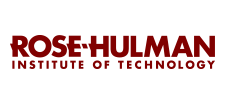
Document Type
Article
Publication Date
5-19-2018
First Advisor
Heather Chenette
Abstract
Membrane adsorbers are one alternative to traditional bead-based chromatography that receive attention in the bioseparation process because of their ability to process material with lower residence times. However some properties of membranes make membrane adsorbers unrealistic for some applications. For example, some membrane adsorbers exhibit lower binding capacities compared with the traditional bead-based chromatography counterparts. The dynamic binding capacity (DBC) in this study is defined as the amount of protein bound in the column when the outlet reaches a certain concentration, which is 10% [2], and the equilibrium binding capacity (EBC) is the binding capacity under the equilibrium conditions, when the rate of protein adsorption is equal and opposite to the rate of protein desorption. Determining the dynamic binding capacities (DBC) of innovative protein adsorbers is one of the most important performance characterization steps in selecting appropriate materials for the purification process of biological products, such as monoclonal antibodies.
The goal of this research is to refine our previous methods and extend our analysis to determine DBC values using the existing DBC theory.
Recommended Citation
Li, Gaoshan, "Predicting the dynamic binding capacities for adsorbents using BSA as a model protein" (2018). Rose-Hulman Undergraduate Research Publications. 27.
https://scholar.rose-hulman.edu/undergrad_research_pubs/27


Comments
RHURP 18-03